Listen to the echoes of the ancients through the timeless Indian rock art, from prehistoric paintings to mysterious engravings that speak through stone
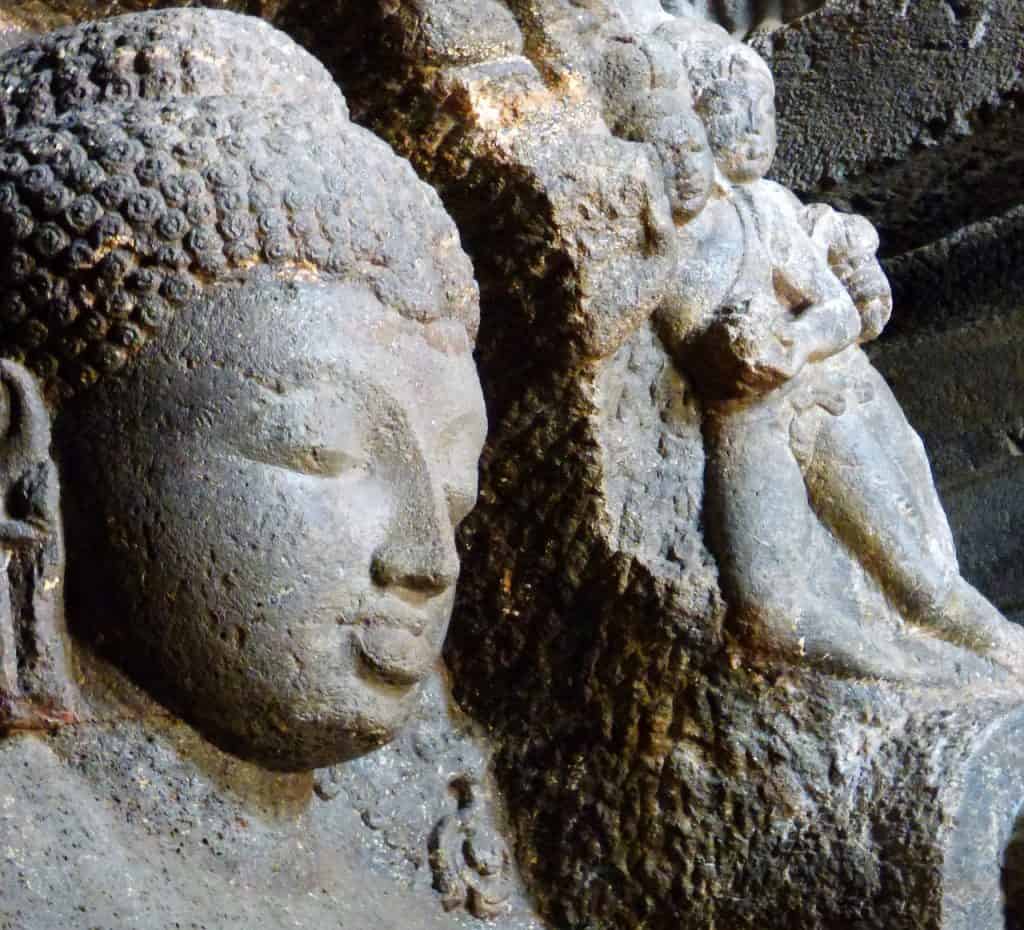
Indian rock art is like a storybook written on stone, telling us about the lives, beliefs, and creativity of people from the past. From the cave paintings of Bhimbetka to the rock carvings of Ashoka and the massive sculptures like the Kailasa Temple, these artworks show how art and culture changed over time.
Each painting, engraving, and sculpture has a story to tell—of hunters, rulers, and spiritual seekers. So what are we waiting for, let’s take a journey through time and discover the artistry that still speaks across centuries!
Rock Paintings or Pictographs
Indian rock art includes ancient paintings that are windows into early human life and creativity. From the prehistoric Bhimbetka paintings to the romantic frescoes of Jogimara and the spiritual Jain murals of Sittanavasal, these artworks depict evolving societies, artistic expressions, and cultural traditions.
Bhimbetka Rock Paintings (30,000 BCE – Medieval Period)
The ancient Bhimbetka Rock Shelters in Madhya Pradesh carry India’s oldest prehistoric paintings, dating back over 30,000 years. These caves depict hunting scenes, warriors on horseback, ritual dances, and animal figures. Painted using natural pigments like red and white ochre, they show the transition from hunter-gatherer societies to early agricultural life.
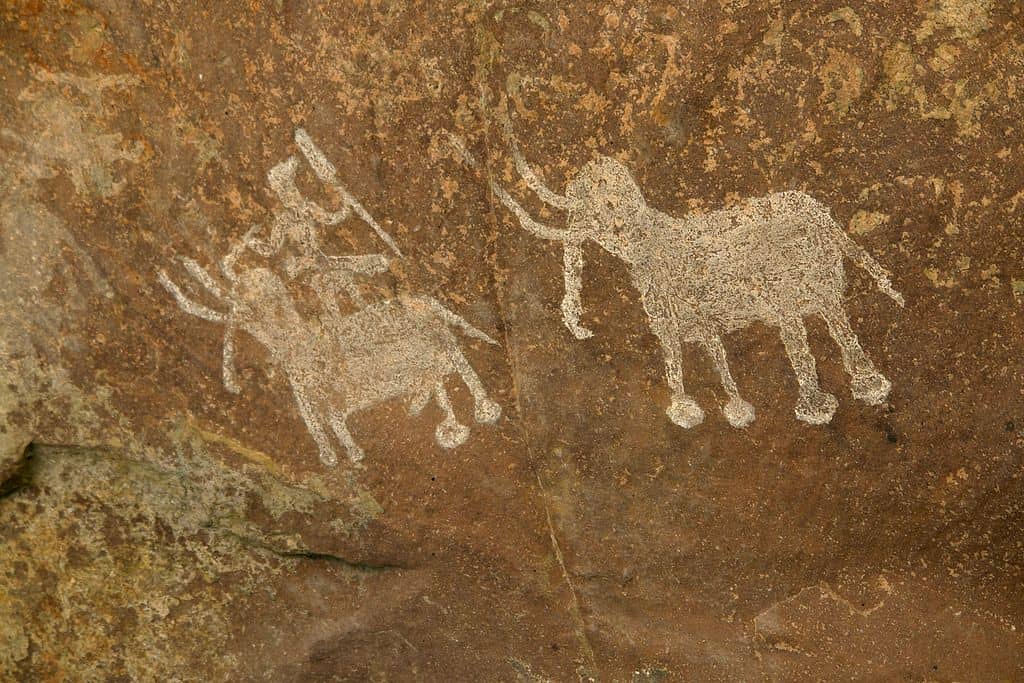
Also, an interesting thing to notice is that many of the paintings overlap, which suggests that the rocks were painted on multiple times over time. The site is a UNESCO World Heritage Site, offering a rare glimpse into early human creativity and evolving social life through layered paintings from different periods.
Jogimara Cave Paintings (2nd Century BCE)
The Jogimara Cave paintings in Chhattisgarh are among India’s earliest known love-themed frescoes. They depict celestial beings, dancers, and floral motifs, created with red and white pigments. Unique inscriptions in Brahmi script narrate a romantic tale of a prince and a dancer, making them India’s earliest literary representations of love.
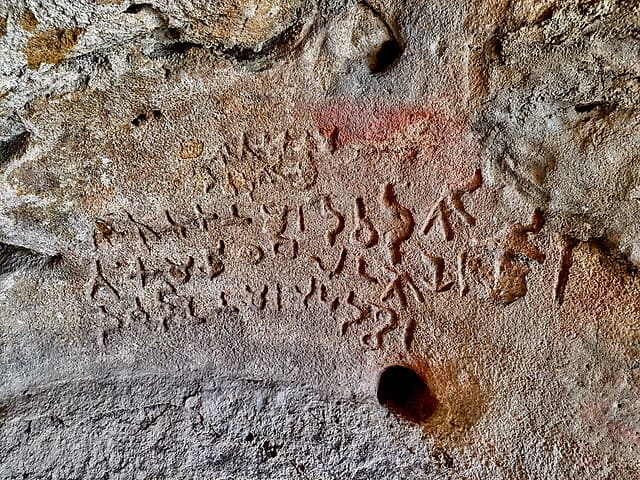
The paintings, though faded, showcase early artistic traditions and serve as an important link between prehistoric rock art and classical Indian murals found in later Buddhist and Hindu sites.
Sittanavasal Cave Paintings (7th Century CE)
The Sittanavasal Caves in Tamil Nadu house exquisite Jain frescoes, painted using natural vegetable dyes. These paintings depict monks meditating in lotus-filled ponds, surrounded by ducks, fish, and flowers, symbolising Samavasarana, a Jain spiritual gathering.
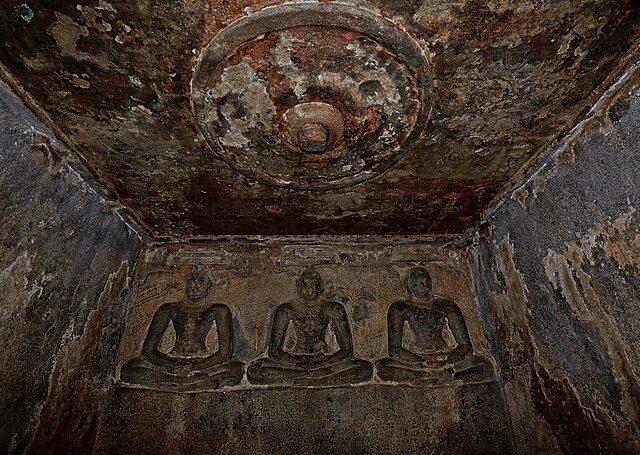
Similar to Ajanta murals these were created in the Pallava and Pandya period. The paintings use the fresco-secco technique where colours are applied on dry plaster instead of wet since it allows detailed artwork and corrections. Though time has eroded many details, the site remains a rare example of early Jain artistic heritage, showcasing the spiritual and aesthetic sensibilities of ancient India.
Rock Sculptures
Indian rock art includes sculptures are history carved in stone, each site revealing a different chapter of the past. Be it the Kailasa Temple, sculpted from a single rock, the Deopahar Rock Sculpture, echoing Assam’s medieval artistry, or the Gomateshwara Statue, symbolising Jain renunciation, these monolithic wonders offer a glimpse into the skill, devotion, and artistic vision that shaped India’s heritage.
Kailasa Temple, Ellora ( 8th Century CE )
This stone marvel in Maharashtra is truly special as it is the largest monolithic(single-piece) rock-cut Hindu temple in the world, carved out from a single basalt rock in the 8th Century CE by the Rashtrakuta king Krishna I. With huge pillars, intricate carvings, life-sized elephants and whatnot, its walls tell the story of Ramayan and Mahabharat.
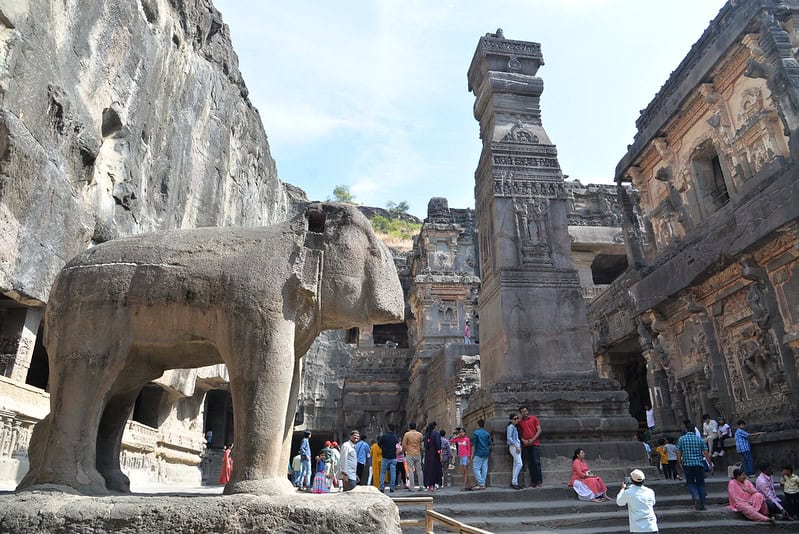
What makes this UNESCO site different from other structures is, that it was made through vertical excavation meaning top-to-bottom sculpturing. The Dravidian-style design and amazing craftsmanship make it a great wonder of Indian rock art, attracting visitors and historians from all over the world.
Deopahar Rock Sculpture ( 10th Century CE )
This fascinating rock sculpture stands as a testament to Assam’s medieval artistic heritage. Located on Deopahar Hill in Numaligarh, Assam, it features intricately carved deities, floral designs, and a striking rock-cut Shiva Linga. The craftsmanship reflects the skill of the Kachari Kingdom, with partially buried monolithic sculptures hinting at a once-thriving temple complex.
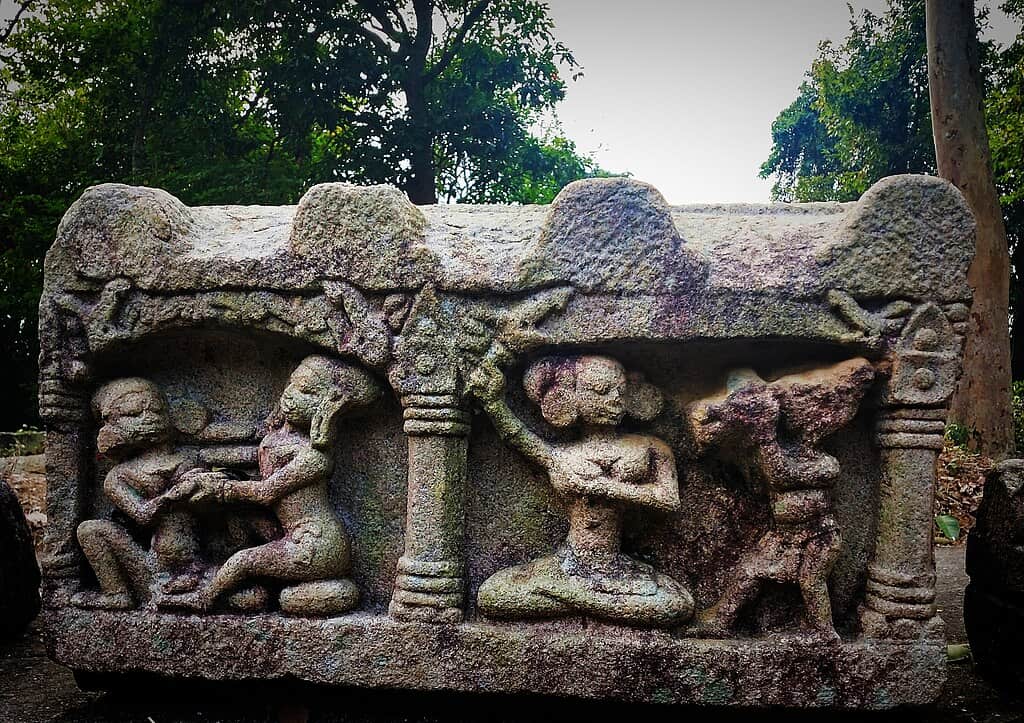
What sets this site apart is its weathered yet detailed engravings, which continue to intrigue archaeologists and history enthusiasts. Despite centuries of natural erosion, Deopahar remains an enduring symbol of Indian rock art tradition, drawing visitors with its mysterious and historic appeal.
Gomateshwara Statue, Shravanabelagola ( 981 CE )
This colossal monolithic statue is among India’s greatest sculptural achievements, carved from a single granite block in 981 CE by Chamundaraya, a minister of the Ganga dynasty. Towering 57 feet high, the Gomateshwara (Bahubali) statue symbolises Jain principles of detachment and spiritual awakening. The lifelike sculpting, with vines growing around the figure’s arms and legs, represents deep meditation.
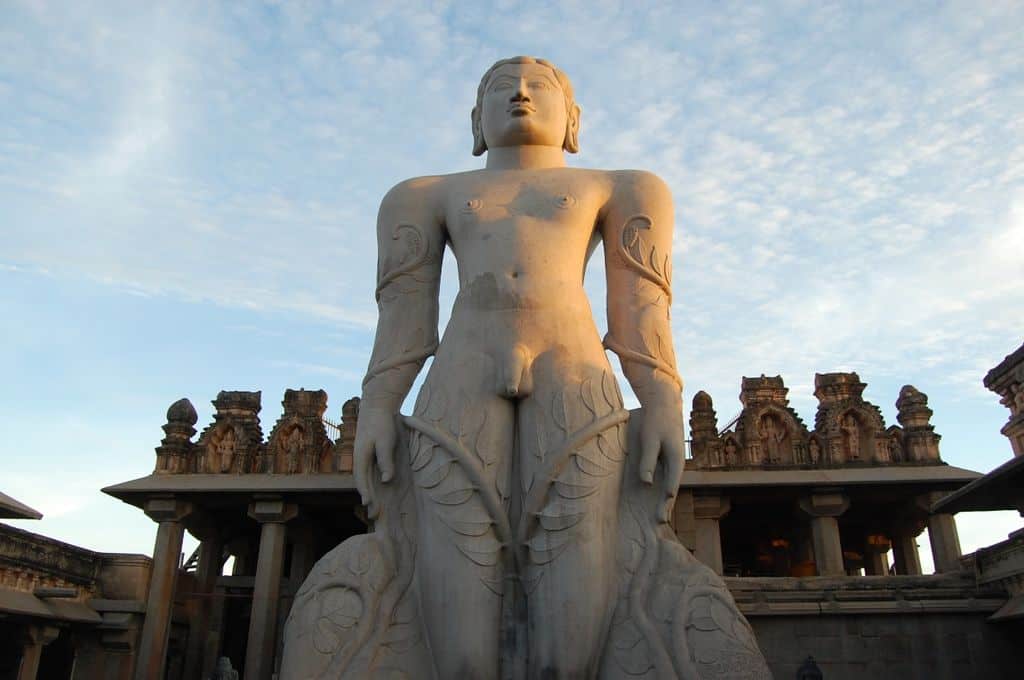
Shravanabelagola is also historically significant as Chandragupta Maurya, the founder of the Maurya Empire, is said to have renounced his throne and embraced Jainism here, spending his final years in ascetic solitude. The grand Mahamastakabhisheka festival, held once every 12 years, further cements its status as a remarkable landmark in India’s rock art and spiritual legacy.
Rock Inscriptions or Engravings
India’s rock inscriptions are stories engraved on stones, each telling a different tale. Be it Ashoka’s peace lessons popularly known as Dhamma or it’s the great Samudragupta’s triumph or the engineering marvels of the Junagadh, these inscribed rock pieces offer a glimpse into the minds of great rulers and the civilisations they shaped.
Ashoka’s Rock Edicts (3rd Century BCE)
Ashoka’s Rock Edicts are the earliest written records of Indian history, found across India, Nepal, Pakistan, and Afghanistan. These inscriptions promote Dhamma (righteousness), non-violence, religious tolerance, and ethical governance.
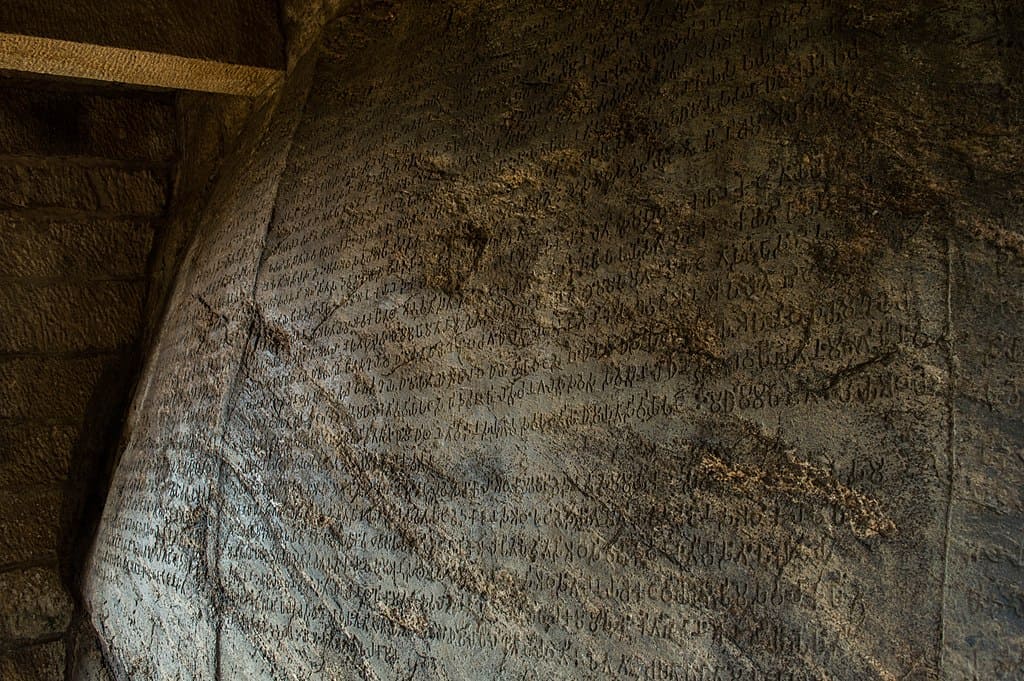
The Dhauli Edict in Odisha is particularly significant as it expresses Ashoka’s remorse after the Kalinga War, leading him to embrace Buddhism and non-violence. The edicts were written in Brahmi, Kharosthi, Greek, and Aramaic, ensuring their message reached a diverse audience. These inscriptions played a key role in spreading Buddhist ideals across Asia. Today, many of these sites are recognised by UNESCO for their historical and cultural importance.
Allahabad Pillar Inscription (4th Century CE)
The Allahabad Pillar Inscription, also known as Prayag Prashasti, glorifies Samudragupta, one of the greatest rulers of the Gupta Empire. Written in Sanskrit by poet Harisena, it details his military conquests, governance, and patronage of scholars. Interestingly, it is engraved on an Ashokan pillar, reflecting how later dynasties reused earlier monuments.
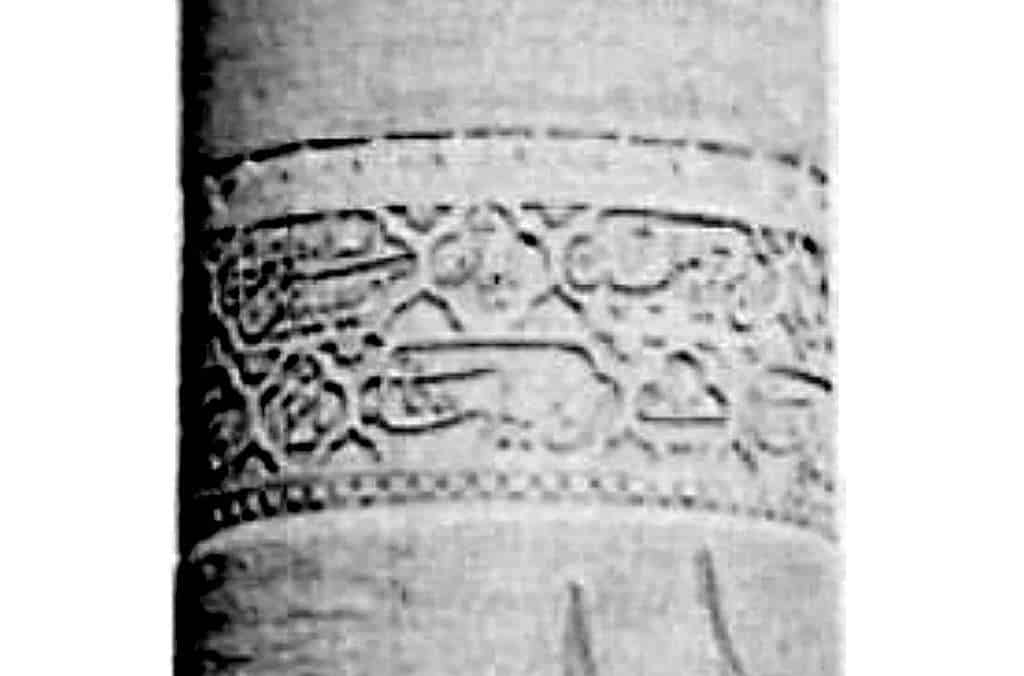
This inscription is crucial in understanding the Gupta Empire’s golden age, marked by advancements in politics, economy, and culture. It remains an essential source of historical knowledge, shaping our understanding of ancient Indian administration and warfare.
Junagadh Rock Inscription (150 CE)
The Junagadh Rock Inscription is unique as it features inscriptions from three different dynasties—Ashoka (3rd century BCE), Rudradaman I (2nd century CE), and Skandagupta (5th century CE). Rudradaman’s section is particularly important as it is the earliest known Sanskrit inscription.
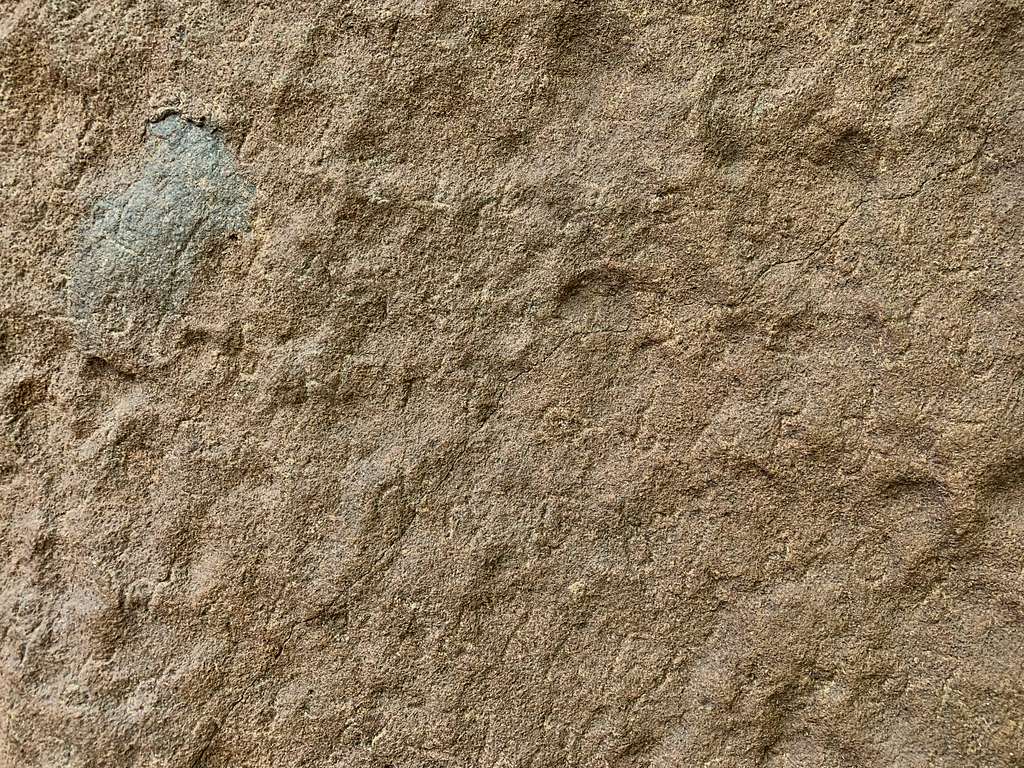
It records the repair of Sudarshana Lake, showcasing advanced water management techniques of the time. The inscription reflects centuries of governance continuity, influenced by Mauryan, Shaka, and Gupta rulers. This site stands as a testament to India’s engineering expertise, political stability, and cultural richness.
Read more: Discover Your India



